The Pythagorean Theorem Explained Simply
The Pythagorean Theorem is one of the fundamental ideas in Geometry and is named after the ancient Greek mathematician Pythagoras. It helps us calculate the length of one side of a right-angled triangle when we know the lengths of the other two sides.
What is a Right-Angled Triangle?
A right-angled triangle is a triangle that has a 90-degree angle, often marked with a small square.
The Pythagorean Theorem
Imagine you have a magical triangle. This triangle has a very special property. When you know the length of one side, you can calculate the length of another side. Let’s see how it works!
The magical triangle has three sides: a long side, a medium side, and a short side. The long side is like the king, and we call it the hypotenuse. The other two sides are the subjects, and we call them legs.
The Pythagorean Theorem tells us that the square of the length of the long side (hypotenuse) is equal to the sum of the squares of the two short sides (legs). Sounds complicated, right? Let’s make it simpler!
Imagine you have a big square that is as big as the long side of the triangle. Then you have two smaller squares that are as big as the short sides of the triangle. When you add up the areas of the two smaller squares, it is exactly equal to the area of the big square. That’s the Pythagorean Theorem in action!
The Pythagorean Theorem is:
Here, “a” and “b” represent the lengths of the two legs of the right-angled triangle, while “c” is the length of the hypotenuse - the side opposite the right angle.

Applying the Pythagorean Theorem
To apply the Pythagorean Theorem, follow these simple steps:
- Identify the sides of the triangle: “a”, “b”, and “c”.
- Substitute the values into the theorem: Square the length of “a” and the length of “b”, add the squares, and you get the square of the length of “c”.
- Calculate the length of the hypotenuse “c”: Take the square root of the sum from Step 2.
Example
Suppose you have a right-angled triangle with side lengths:
a = 3 cm
b = 4 cm
Step 1:
Step 2:
So, the length of the hypotenuse “c” is 5 cm.
Calculating “a” or “b”
Sometimes, we know the length of the hypotenuse “c” and one of the legs, such as “a”. To calculate the length of the other leg “b”, you can rearrange the Pythagorean Theorem:
Then, take the square root of “b²” to find the length of “b”.
Example
Suppose you have a right-angled triangle with side lengths:
c = 5 cm
a = 3 cm
To find “b”:
So, the length of the leg “b” is 4 cm.
Why is the Pythagorean Theorem Important?
The Pythagorean Theorem is not only significant in Geometry but also has numerous applications in various fields such as architecture, engineering, and physics. It enables us to calculate side lengths of right-angled triangles and solve complex problems.
Conclusion
The Pythagorean Theorem is a powerful tool to help us calculate the side lengths of right-angled triangles. Through its application, we can solve a variety of interesting problems and explore the fascinating world of geometric relationships.
Try it out for yourself and dive into the exciting world of the Pythagorean Theorem!